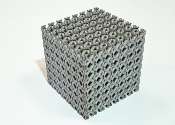The first wireless flying robotic insect takes off
Insect-sized flying robots could help with time-consuming tasks like surveying crop growth on large farms or sniffing out gas leaks. These robots soar by fluttering tiny wings because they are too small to use propellers, ...
May 15, 2018
2
8638









